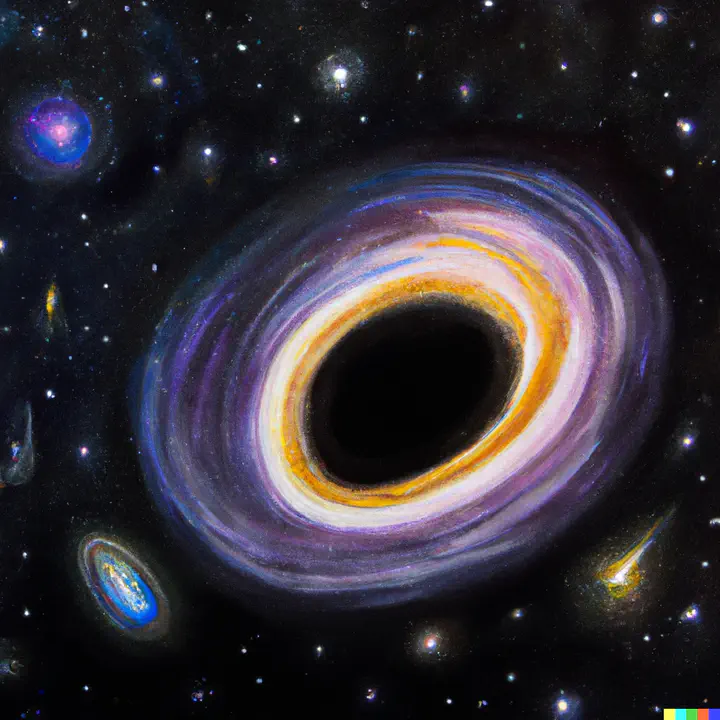Bachelor's Thesis
 An AI’s impression of Centaurus A
An AI’s impression of Centaurus AIn my Bachelor’s thesis I determine the mass of the central black hole within the elliptical galaxy Centaurus A (NGC 5128). Given that Centaurus A hosts the nearest active galactic nucleus and it is also the nearest recent merger remnant, it is notably well suited to study co-evolution of the black hole and its host galaxy. I used Integral-Field observations of the stellar kinematics in the K-band (NIR), carried out with SINFONI at the ESO VLT, as the basis of our models. After parametrising the surface brightness with the multi-Gaussian expansion (Cappellari, 2002), dynamical models under various assumptions can be constructed (using the approach by Cappellari, 2008). The model which fits best to the observations assumes a spherical symmetry of the galaxy and requires an anisotropy profile. Our results for the black hole mass MBH = (5.98 +/- 0.47) x 10^7 Msun and the mass-to-light ratio M/L = (0.65 +/- 0.02) Msun/Lsun coincide with the ones by Cappellari et al. (2009). Similarly our black hole mass matches the predictions of the MBH-sigma scaling relations (Gültekin et al., 2009; Kormendy and Ho, 2013).